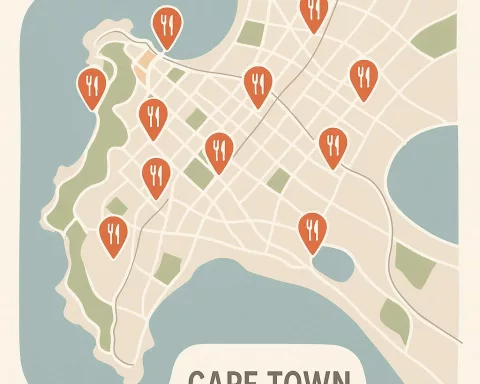Eric Mathoho, once a shining star in South African football, faced tough financial troubles after his career took an unexpected turn. His story teaches us that many athletes struggle with money management because they lack the skills to handle their wealth. Clubs and agents must step up, offering training and support to help players learn about finances. Just like artists of the past who faced fame’s ups and downs, Mathoho’s journey reminds us that understanding money is key to enjoying a secure future, even after the cheering stops.
What can we learn from Eric Mathoho’s financial struggles as an athlete?
Eric Mathoho’s financial struggles highlight the urgent need for financial literacy among athletes. Many players face challenges managing wealth due to a lack of education. To prevent similar situations, clubs and agents should prioritize financial management training and support for athletes throughout their careers.
The Fleeting Nature of a Football Career
In the exhilarating and vibrant world of football, where the adulation of fans and the thrill of the game combine to create an intoxicating atmosphere, lies an often overlooked reality: the brief and precarious nature of players’ careers. The recent plight of former Kaizer Chiefs legend and Bafana Bafana star Eric Mathoho serves as a poignant reminder of this harsh truth. His journey from the pinnacle of South African football to facing financial turmoil mirrors the challenges many athletes encounter as they navigate life beyond the field.
Known affectionately as “Tower” due to his towering presence in defense, Eric Mathoho enjoyed a celebrated career with Kaizer Chiefs. For over a decade, Mathoho was a central figure in the team’s backline, earning accolades and the adoration of fans. His contributions to Bafana Bafana also cemented his status as one of South Africa’s premier defenders. However, the end of the 2023/24 season brought an unexpected halt to his career, as he struggled to secure a new club after being released by Amakhosi.
Mathoho’s recent struggles shed light on a broader issue within the footballing world: financial management. Footballers, often thrust into the limelight at a young age, earn substantial sums during their prime years. Despite their earnings, the financial literacy required to manage such wealth is seldom part of their training. The allure of an opulent lifestyle, compounded by the misconception of everlasting fame and fortune, leads many athletes down a precarious path.
The Historical Perspective of Fame and Fortune
Historical and artistic movements have long captured the ephemeral nature of fame and fortune. The fleeting success experienced by Baroque artists, whose works were celebrated in their lifetimes but often fell into obscurity posthumously, parallels the journeys of many footballers. Like Baroque artists such as Caravaggio, who faced financial difficulties amidst their creative peaks, modern athletes encounter similar challenges. Eric Mathoho’s narrative resonates with this historical context, highlighting the cyclical nature of fame and financial instability.
A report by Sunday World revealed that the Johannesburg High Court granted Standard Bank an order to repossess Mathoho’s Volkswagen Polo sedan due to defaulted monthly installments, accumulating a debt of nearly R50,000. This legal action underscores the urgent need for financial education among athletes. Despite earning significant incomes during their careers, many players lack the knowledge to manage their finances prudently.
An analogy from the world of art serves as a poignant reminder: Michelangelo, one of the Renaissance’s most revered artists, meticulously managed his finances, ensuring his wealth lasted beyond his lifetime. His approach starkly contrasts with the experiences of many modern athletes, who often lack such foresight. Michelangelo’s story exemplifies the importance of financial literacy, a lesson that could greatly benefit individuals like Mathoho.
The Role of Clubs and Agents in Financial Management
The footballing community must recognize the pivotal role that clubs and agents play in shaping players’ financial futures. Clubs, particularly those with the stature of Kaizer Chiefs, Orlando Pirates, and Mamelodi Sundowns, bear a responsibility to educate their players on financial management. Agents, too, should advocate for their clients’ long-term financial well-being, guiding them towards sustainable investments and prudent spending habits.
The Renaissance period, with its emphasis on education and holistic development, offers valuable insights into this issue. Renaissance humanists believed in nurturing well-rounded individuals proficient in various fields. Applying this philosophy to the modern football world, clubs should prioritize comprehensive education programs that encompass financial management, personal development, and career planning. Such an approach would prepare players for life beyond the pitch, mitigating the risk of financial distress.
Mathoho’s situation also prompts reflection on the broader societal context. In South Africa, where economic disparities are stark, the financial struggles of a footballing legend like Mathoho resonate deeply. His journey underscores the need for systemic changes in how athletes are prepared for life after sports. Financial literacy programs, mentorship initiatives, and partnerships with financial institutions could provide athletes with the tools they need to navigate their careers and beyond.
Drawing Lessons from Artistic Movements
Artistic movements throughout history have often depicted the struggles and triumphs of individuals. The Romantic era, with its focus on individual experience and emotion, parallels the personal journeys of athletes like Mathoho. Romantic literature and art celebrated the highs and lows of human existence, much like the rollercoaster of a footballer’s career. Mathoho’s story, filled with both glory and hardship, mirrors the themes of Romanticism, reminding us of the profound human experiences within the world of sports.
As fans ponder the fate of their beloved “Tower,” they grapple with questions of accountability and responsibility. Should players bear the brunt of blame for financial mismanagement, or should the onus lie with the institutions that nurture their talent? This debate mirrors broader societal discussions on individual versus collective responsibility. Just as communities support individuals in times of need, the footballing fraternity must rally around its own, providing guidance and support.
The world of sports, much like the realm of art, reflects the human experience in all its complexity. The triumphs and tribulations of athletes serve as a microcosm of broader societal dynamics. Just as artists have captured the essence of the human condition through their works, the stories of athletes like Mathoho offer valuable insights into the interplay of fame, fortune, and financial management.
In conclusion, Eric Mathoho’s journey from celebrated footballer to financial distress encapsulates the multifaceted challenges faced by athletes. His story underscores the urgent need for financial education within the sports community. By drawing lessons from historical and artistic movements, we can better understand the delicate balance of fame and fortune, and the importance of holistic development. As the footballing world reflects on Mathoho’s plight, it must also chart a path towards a more sustainable and supportive future for its stars.
Recognizing the importance of financial literacy and the role of clubs and agents in nurturing well-rounded individuals can transform the landscape of professional sports. Athletes, equipped with the knowledge and tools to manage their wealth, can enjoy long-term stability and success beyond their playing years. By fostering a culture of comprehensive education and support, we can ensure that the next generation of footballers is better prepared to navigate the complexities of fame and fortune.
FAQ: The Rise and Fall of Eric Mathoho
What are the key lessons from Eric Mathoho’s financial struggles?
Eric Mathoho’s financial struggles serve as a critical reminder of the importance of financial literacy for athletes. Many athletes, like Mathoho, face challenges in managing wealth due to a lack of education. Clubs and agents need to prioritize financial management training to help players understand their finances throughout their careers.
Why is financial literacy important for athletes?
Financial literacy is crucial for athletes as it equips them with the skills needed to manage their wealth effectively. Many athletes earn substantial sums during their careers but often lack the knowledge to handle their finances wisely, which can lead to financial distress after their playing days are over.
How do clubs and agents contribute to an athlete’s financial education?
Clubs and agents play a vital role in shaping athletes’ financial futures. They should provide education on financial management, advocate for sustainable investments, and guide players to develop prudent spending habits. A proactive approach can help mitigate financial challenges faced by athletes post-career.
What parallels exist between Eric Mathoho’s story and historical figures?
Mathoho’s journey mirrors the experiences of historical figures, such as Baroque artists, who faced financial difficulties despite their fame. Just as artists like Michelangelo managed their wealth wisely, Mathoho’s story highlights the need for athletes to adopt similar financial foresight to secure their futures.
How do societal factors impact athletes like Eric Mathoho?
The financial struggles of athletes like Mathoho reflect broader societal issues, including economic disparities. Addressing these challenges requires systemic changes, such as the implementation of financial literacy programs, mentorship initiatives, and partnerships with financial institutions to better prepare athletes for life beyond their sports careers.
What can be done to support athletes in managing their finances?
Support for athletes can include comprehensive education programs that cover financial management, personal development, and career planning. By fostering a culture of financial literacy and ongoing support from clubs and agents, future generations of athletes can be better equipped to manage their wealth and navigate the complexities of fame and fortune.












